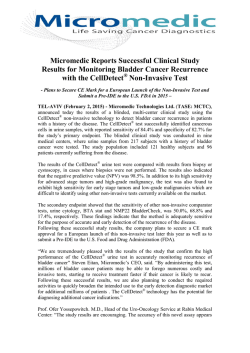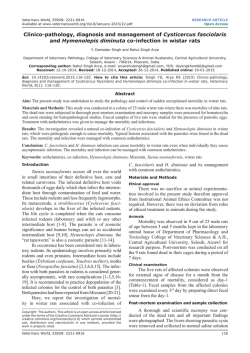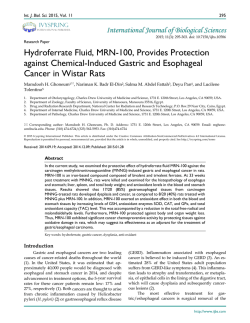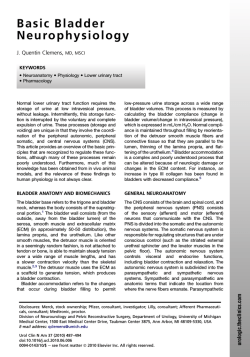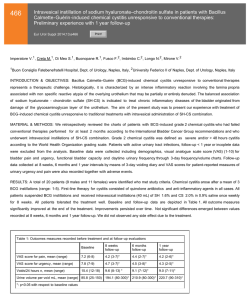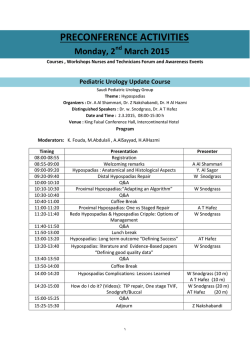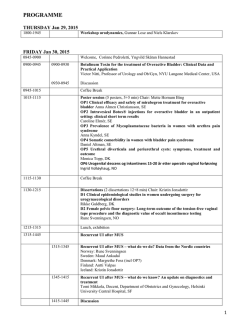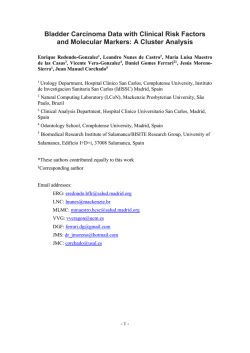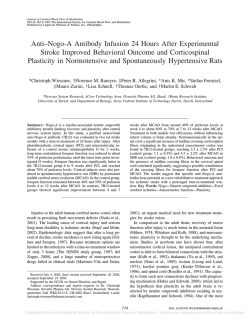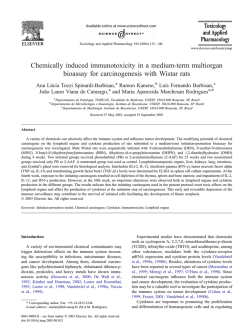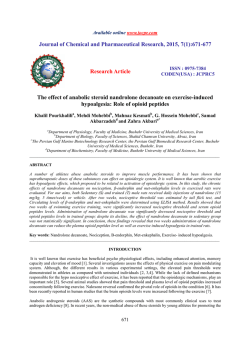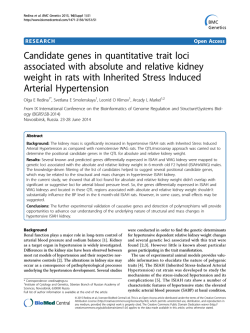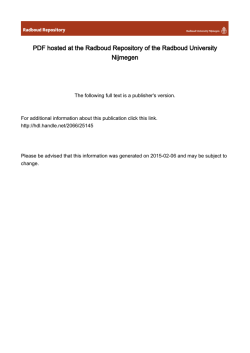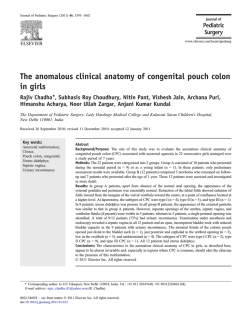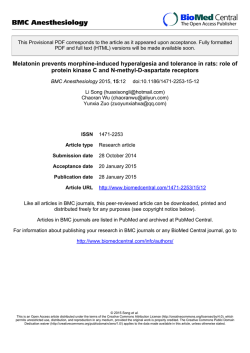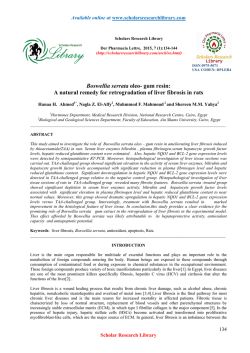
1-s2.0-S1569905614603699-main
374 DFL23448, a novel TRPM8-selective ion channel antagonist, modifies bladder function and reduces bladder overactivity in awake rats Eur Urol Suppl 2014;13;e374 Print! Print! Mistretta F.A. 1 , Russo A. 1 , Castiglione F.1 , Brandolini L. 2 , Aramini A. 2 , Bianchini G.2 , Benigni F.1 , Hedlund P. 3 1 Urological Research Institute, Dept. of Urology, Milan, Italy, 2 Dompe SpA Research Center, Dept. of Discovery, L'Aquila, Italy, 3 Urological Research Institute, Milan, Italy, Dept. of Clinical Pharmacology, Linköping, Sweden INTRODUCTION & OBJECTIVES: The transient receptor potential (TRP) melastin 8 ion channel (TRPM8) is implicated in bladder sensing. Expression of TRPM8 is altered in bladders from patients with bladder overactivity (BO) or rats with outflow obstruction. However, information on TRPM8 inhibition in BO models is scarce. We studied effects of a new TRPM8-selective antagonist (DFL23448) with > 500fold selectivity for TRPM8 vs. other TRP receptors, on bladder function and experimental BO in female rats. MATERIAL & METHODS: After ethical approval, 43 Sprague Dawley rats underwent awake cystometry. Effects of 10mg/L intravesical (IVES) or 10mg/kg intravenous (IV) DFL23448 on normal bladder function and on PGE 2 (50µM, IVES)-induced BO were studied. Data are given as mean±SEM. T-test and an ANOVA (Newman-Keuls) were used for comparisons. Effects by DFL23448 were also studied in cold stress-induced BO (menthol skin spray). TRPM8-expression in the bladder and dorsal root ganglion (DRG) was studied by PCR and immunofluorescence (IF). RESULTS: In naive rats, DFL23448 (IVES; n=13) increased (p<0.01) micturition intervals (MI), micturition volumes (MV), and bladder capacity (BC) by 36±9%, 26±8%, and 29±8%, but residual volume (RV) did not changed. Basal pressure (BP) and threshold pressure (TP) decreased (p<0.01) by 24±4% and 15±3%. Maximum pressure (MP) was unaffected by DFL23448. After IVES PGE 2 in DFL23448-treated rats (IVES, n=6), MI, MV and BC decreased by 15±8%, 13±4%, and 12±4% (ns), whereas vehicle controls exhibited reductions of MI, MV and BC by 38±5%, 39±5%, and 37±6% (p<0.05-0.01 vs DFL23448). RV was similar in both groups. In controls, but not in DFL23448treated (IVES) rats, BP, TP and MP increased (p<0.01) by IVES PGE 2 . DFL23448 (IV, n=8), but not vehicle (n=8), increased (p<0.05) MI (13±4%), MV (19±6%), and BC (17±6%). Bladder pressures were similar for drug or vehicle at baseline. After IVES PGE 2 , MI, MV, and BC decreased (28-34%; p<0.05) in controls, but not in DFL23448-treated rats. The RV increased (0.03±0.02ml to 0.09±0.03ml) in controls (p<0.05) but did not change in DFL23448-treated rats (0.02-0.03ml). After IVES PGE 2 , BP, TP and MP increased by 40-75% in vehicle (p<0.05) and 6-20% in DFL23448 rats. The AUC increased by 17±7% and 74±23% (p<0.05) in DFL23448 and vehicle rats after IVES PGE 2 . In vehicle-treated rats, cold-stress BO resulted in decreased MI, MV and BC (n=4). DFL23448 (10mg/kg, IV; n=4) prevented these effects. By PCR and IF, TRPM8 was located in the bladder mucosa, in intramural ganglia and nerves of the detrusor, as well as in the DRG. CONCLUSIONS: A functional role for bladder TRPM8-mediated signals in normal micturition and experimental BO in awake rats is considered. Drugs acting to inhibit the TRPM8 should be further explored in bladder pharmacology.
© Copyright 2025
